Capitalizing on niches
Capitalizing on niches

The combination of niche targeting and active portfolio management provides many advisors with a competitive edge.
Advisors who endorse active portfolio management have carved out a distinctive niche for themselves in the wealth-management industry serving retirees, high-net-worth clients, families in their prime earning years, and the mass affluent. Savvy advisors are going even further and targeting specific audiences to garner a greater competitive edge—by demonstrating how proactive strategies can meet a specific client segment’s needs and desires.
Proactive Advisor Magazine has interviewed dozens of successful advisors and found that many are thriving by adding a “niche focus” to their practice. While these advisors may still serve a broad client base, they have found that immersing themselves in the understanding of a narrower segment—and introducing active investment management to that segment—can pay big dividends.
***
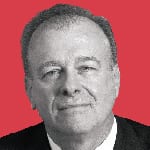 Take Don Kusak, an experienced advisor who joined forces with a retired Air Force officer to form Patriot Strategic Investments, which has provided a wide range of financial products and services to active and retired military personnel. Kusak, who is also a co-founder of Kusak Wealth Management in the Houston area, executes his active-management investment philosophy for both military and nonmilitary clients through the use of third-party money managers.
Take Don Kusak, an experienced advisor who joined forces with a retired Air Force officer to form Patriot Strategic Investments, which has provided a wide range of financial products and services to active and retired military personnel. Kusak, who is also a co-founder of Kusak Wealth Management in the Houston area, executes his active-management investment philosophy for both military and nonmilitary clients through the use of third-party money managers.
“We employ strategies that can react quickly to changing market and economic conditions, blending some more traditional core strategies with highly tactical approaches,” Kusak says.
***
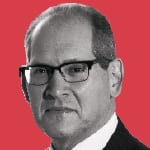 Stein Financial Group, based in Minneapolis, now provides wealth-management services to government employees when it had previously only provided worksite benefits services. A big part of the message delivered by Jeffery Stein and his team involves the principles of active investment management.
Stein Financial Group, based in Minneapolis, now provides wealth-management services to government employees when it had previously only provided worksite benefits services. A big part of the message delivered by Jeffery Stein and his team involves the principles of active investment management.
“Particularly for pre-retirees and those in retirement, we are helping to provide clients with a long-term perspective that aims to maximize the probability of repeatable performance,” Stein says. “We follow disciplined risk-management processes as part of our active management approach in developing deliberate and well-diversified portfolios.”
***
 While Johnathon Davis of American Capital Management Inc. in Lexington, Kentucky, offers a full range of investment advisory services to prospective clients, he is also deeply immersed in providing 403(b) investment guidance to nonprofit employees, especially those at the University of Kentucky.
While Johnathon Davis of American Capital Management Inc. in Lexington, Kentucky, offers a full range of investment advisory services to prospective clients, he is also deeply immersed in providing 403(b) investment guidance to nonprofit employees, especially those at the University of Kentucky.
For Davis, a key chapter in his playbook involves providing 403(b) plan participants with access to actively managed investment strategies. “It’s outstanding to have tactical money management in a retirement plan,” Davis says. “I sit down with participants and explain the purpose of active money management—the fact that dedicated professional money managers are actively watching all elements of their portfolios and reacting appropriately as market conditions change. This helps to smooth out volatility and helps clients reach their goals through both up and down markets.”
***
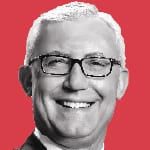 Advisor Michael Pennica, based in Colorado, formed Pennica Financial Group in 2008 to advise both a high-net-worth and mass-affluent clientele, including those who have served in the military.
Advisor Michael Pennica, based in Colorado, formed Pennica Financial Group in 2008 to advise both a high-net-worth and mass-affluent clientele, including those who have served in the military.
“Our goal is to deliver the same high level of service to all clients,” Pennica says. “A big part of this is our belief in active investment management. Active management is not just something that should be reserved for the ultra-wealthy—we want to show people from all walks of life how it can make a difference.”
***
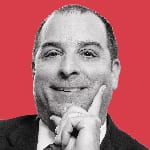 Daniel Namey, president of Namey Financial Group in Jacksonville, Florida, has a particular expertise working with small-business owners of companies from 25 to 400 employees for their 401(k) needs and wealth management for owners and key executives. After the financial crisis in 2007-2009, Namey decided to transition to outside money managers who have strong track records in active management and “the ability to stay on top of their strategies at all times.”
Daniel Namey, president of Namey Financial Group in Jacksonville, Florida, has a particular expertise working with small-business owners of companies from 25 to 400 employees for their 401(k) needs and wealth management for owners and key executives. After the financial crisis in 2007-2009, Namey decided to transition to outside money managers who have strong track records in active management and “the ability to stay on top of their strategies at all times.”
“The bottom line is we have access to many different money managers, and we don’t have any specific biases going in,” Namey says. “We evaluate who we want to bring to our clients that is the best match for their goals and objectives. And they are then going to actively manage the account strategy or strategies based on their quantitative systems.”
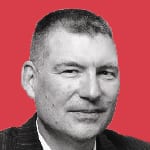 Jay Blanchard, a wealth manager at The Financial Guys in Buffalo, New York, has developed seminars and marketing materials covering the specific financial needs of women, whether it be widows facing retirement alone, high-achieving professionals with little time, or “simply someone who wants to be as knowledgeable as possible.”
Jay Blanchard, a wealth manager at The Financial Guys in Buffalo, New York, has developed seminars and marketing materials covering the specific financial needs of women, whether it be widows facing retirement alone, high-achieving professionals with little time, or “simply someone who wants to be as knowledgeable as possible.”
He educates his clients on sophisticated financial concepts and explains how his firm uses tactical active strategies to find the appropriate risk-return profile for a specific strategy or blend of strategies.
“I take the time to expose all clients to investment concepts and strategies that can often be unfamiliar, including tactical active investment management and the relationship of risk to return,” Blanchard says.
***
 Jong Oh, president and chief executive officer of Professional Insurance and Financial Services in Blue Bell, Pennsylvania, caters to Korean-American small-business owners and other professionals.
Jong Oh, president and chief executive officer of Professional Insurance and Financial Services in Blue Bell, Pennsylvania, caters to Korean-American small-business owners and other professionals.
Like Oh, many of her clients emigrated to the U.S. during the 1970s and 1980s and have spent decades living frugally and working hard to accumulate wealth. As such, her clients tend to be wary of risk and want to protect what they have accumulated so they can pass on their wealth to their descendants.
For these risk-averse clients, the goal of active portfolio management is not to “chase returns” but to provide returns that will outperform the most conservative investments over time, Oh says. For this goal, active money management, with its risk-management tools, makes perfect sense. Says Oh, “My clients are not looking to take big chances with their assets, their retirement, or their legacies. The focus of active money management on controlling risk and volatility works well for this market.”
***
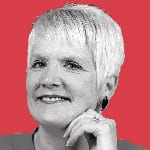 Nancy Hairsine, founder of Lifetime Planning in Pittsburg, California, has a special focus on an older client segment, working with many clients well into their retirement years. She says, “My average client has a conservative risk profile and should have a well-diversified investment approach with lower volatility.”
Nancy Hairsine, founder of Lifetime Planning in Pittsburg, California, has a special focus on an older client segment, working with many clients well into their retirement years. She says, “My average client has a conservative risk profile and should have a well-diversified investment approach with lower volatility.”
She grew up in a rural area in Minnesota and finds that using references to farming helps her client base understand risk management for their investments. “Farmers are exposed to all kinds of conditions they cannot really control, most importantly the weather,” Hairsine says. “There are lots of very sophisticated tools they can use today to manage risk, including financial instruments such as futures hedges and vast improvements in farming technology.”
This example is directly analogous to managing investments within today’s financial environment, she says, and the advancements in portfolio management through third-party active managers have been “remarkable.”
***
 Tu Bui, of Transamerica Financial Advisors in Pleasanton, California, serves physicians, business owners, and other high-net-worth clients, many of whom are missionaries—like his father—who emigrated from Vietnam. Active management has given Bui “a meaningful story to share with prospects that is very differentiating.”
Tu Bui, of Transamerica Financial Advisors in Pleasanton, California, serves physicians, business owners, and other high-net-worth clients, many of whom are missionaries—like his father—who emigrated from Vietnam. Active management has given Bui “a meaningful story to share with prospects that is very differentiating.”
“Who wouldn’t want to talk about concepts that will allow them to protect and grow their wealth?” he says. “It has provided the opportunity to give second opinions to people about their investment portfolios and then back those up with real strategies that they may not have heard about before. That helps to set me apart from many advisors still pursuing passive strategies.”
***
 Mike Jones has served as a military and commercial pilot for several decades. He has also provided financial guidance to pilots and others in the aviation industry, using active investment management principles.
Mike Jones has served as a military and commercial pilot for several decades. He has also provided financial guidance to pilots and others in the aviation industry, using active investment management principles.
“I have to say, with my military and flying background, this makes sense to me on so many levels—the idea of having a solid plan in place for emergencies and worst-case scenarios,” Jones says. “Active money management is also a disciplined approach to investing, using advanced mathematical tools and models, and that is also something that inherently appeals to me.”
***
No matter the specialized audience, savvy advisors know that the benefits of active portfolio management can provide a powerful competitive edge for their advisory practices. But, even more importantly, they recognize that proactive strategies can effectively meet the tailored needs and aspirations of a variety of niche target audience segments.
The opinions expressed in this article are those of the author and do not necessarily represent the views of Proactive Advisor Magazine. These opinions are presented for educational purposes only.
This article first published in Proactive Advisor Magazine on July 9, 2015, Volume 7, Issue 1.


